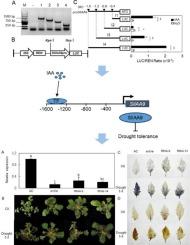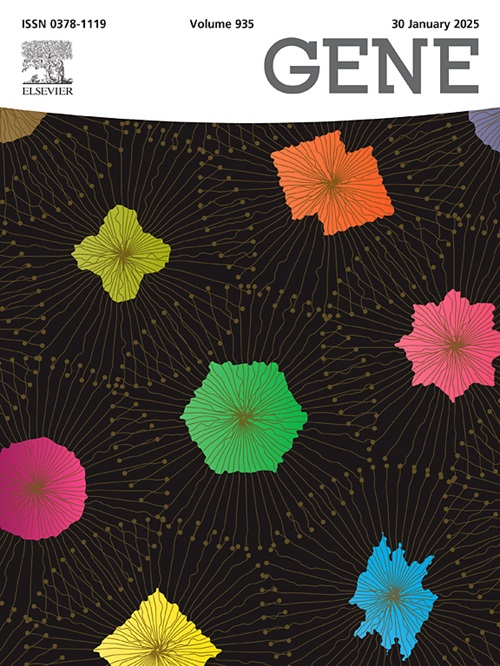SlIAA9 negatively regulates tomato (Solanum lycopersicum) tolerance to drought stress
IF 2.4
3区 生物学
Q2 GENETICS & HEREDITY
引用次数: 0
Abstract
The Aux/IAA (auxin/indole-3-acetic acid) gene family coordinates many key processes in the adaptive growth of plants. However, limited information is available about the regulatory mechanism of SlIAA9 (Solyc04g076850), which is a member of the Aux/IAAs. The goal of this study was to analyze the pattern of expression and regulatory mechanism of SlIAA9 in detail. The promoter of SlIAA9 gene with 1600 bp upstream of ATG was cloned from tomato (Solanum lycopersicum cv. Ailsa Craig). The promoter analysis suggests that abiotic stressors and phytohormones may stimulate the expression of SlIAA9. Furthermore, we confirmed that the SlIAA9 transcript was induced by auxin, gibberellin, salicylic acid, abscisic acid, methyl jasmonate, heat, cold, drought, and salt stress. We preliminarily found that SlIAA9 plays a negative role in the drought signaling response by affecting the ability to scavenge reactive oxygen species. To analyze the function of the SlIAA9 promoter in more detail, we created the proSlIAA9:GUS transgenic tomato line. GUS staining showed that the SlIAA9 promoter was highly active in the roots, leaves, sepals, petals and anthers of tomato seedlings. The promoter was expressed the most highly in the flowers. To further verify the activity of the SlIAA9 promoter, we found that different segments of the SlIAA9 promoter had different regulatory effects on the expression of downstream genes in response to IAA. A 400 bp fragment was identified as the key functional region for IAA response.

SlIAA9负调控番茄(Solanum lycopersicum)对干旱胁迫的耐性。
Aux/IAA(生长素/吲哚-3-乙酸)基因家族协调植物适应性生长的许多关键过程。然而,关于作为Aux/IAAs成员的SlIAA9 (Solyc04g076850)的调控机制的信息有限。本研究的目的是详细分析SlIAA9的表达模式和调控机制。从番茄(Solanum lycopersicum cv.)中克隆出位于ATG上游1600 bp的SlIAA9基因启动子。艾尔莎•克雷格)。启动子分析表明,非生物应激源和植物激素可能刺激了SlIAA9的表达。此外,我们证实了SlIAA9转录本可被生长素、赤霉素、水杨酸、脱落酸、茉莉酸甲酯、热、冷、干旱和盐胁迫诱导。我们初步发现,SlIAA9通过影响活性氧清除能力,在干旱信号响应中起负向作用。为了更详细地分析SlIAA9启动子的功能,我们创建了proSlIAA9:GUS转基因番茄品系。GUS染色结果表明,SlIAA9启动子在番茄幼苗的根、叶、萼片、花瓣和花药中均表现出较高的活性。启动子在花中的表达量最高。为了进一步验证SlIAA9启动子的活性,我们发现SlIAA9启动子的不同片段在IAA作用下对下游基因的表达有不同的调控作用。一个400 bp的片段被确定为IAA反应的关键功能区域。
本文章由计算机程序翻译,如有差异,请以英文原文为准。
求助全文
约1分钟内获得全文
求助全文
来源期刊

Gene
生物-遗传学
CiteScore
6.10
自引率
2.90%
发文量
718
审稿时长
42 days
期刊介绍:
Gene publishes papers that focus on the regulation, expression, function and evolution of genes in all biological contexts, including all prokaryotic and eukaryotic organisms, as well as viruses.
 求助内容:
求助内容: 应助结果提醒方式:
应助结果提醒方式:


